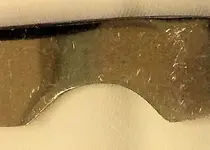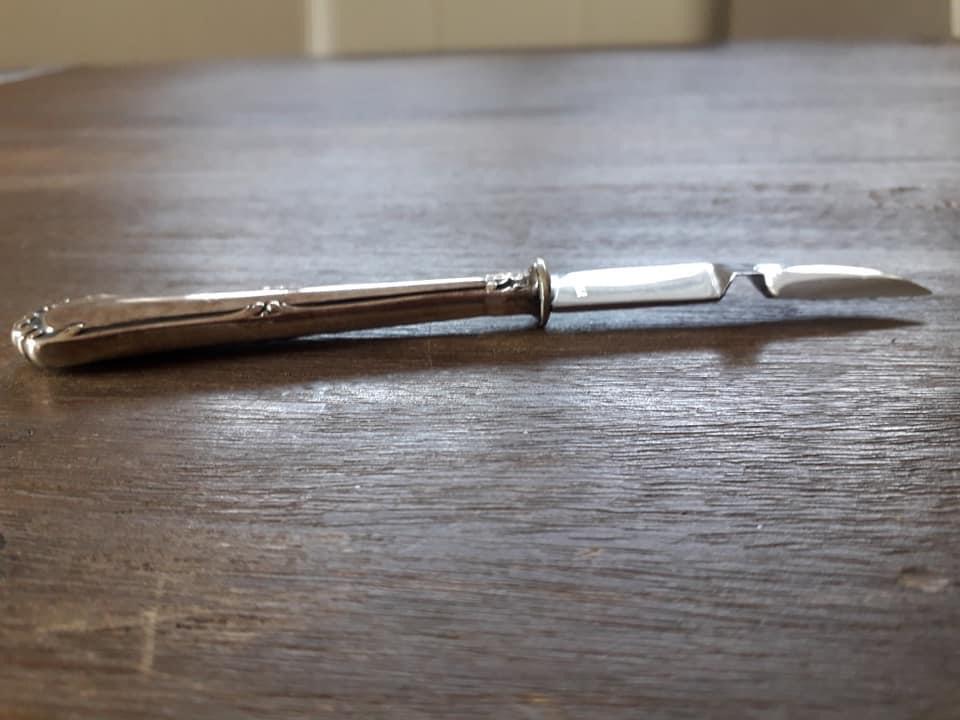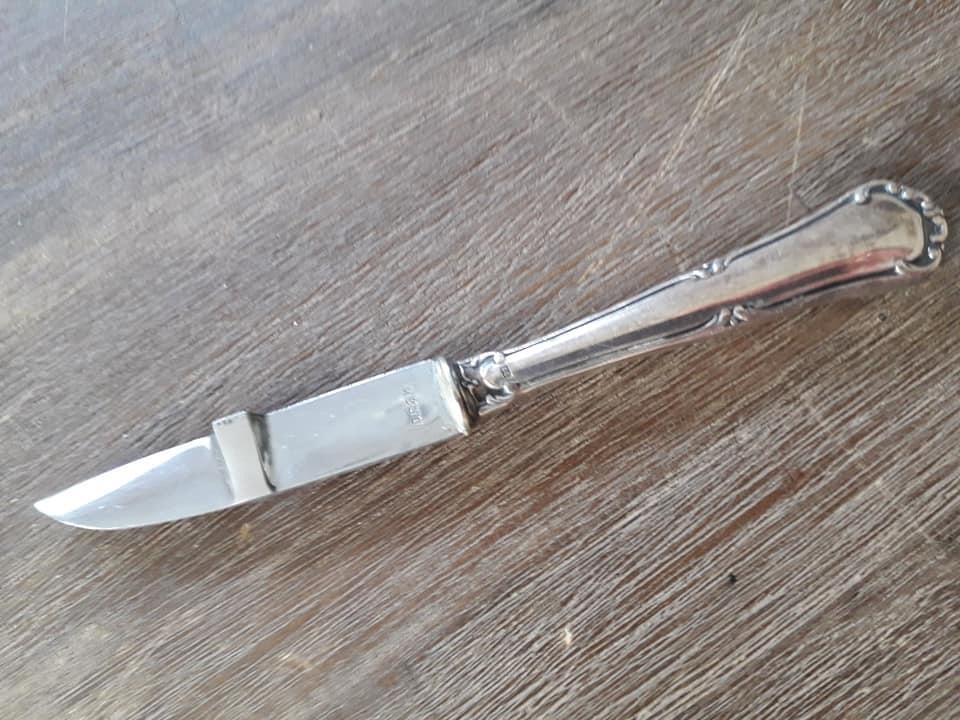I have racked my brains on this one but have never seen anything exactly like this… and I’ve seen a lot of odd cutlery in my time. I would be sure that it’s table flatware and not a kitchen or other implement, from the handle pattern.
I doubt it has anything to do with butter since butter knives invariably have a blunt/rounded tip, not a sharp tip. The only similar item I have ever seen is this one, from Dalper of Portugal (other companies made them too):


Although sold as a “steak” knife, it was for grilled/roasted meats in general, with the groove I think intended for wrangling meat off the bone without the knife slipping. Things like pork/lamb chops or duck/chicken/turkey legs. Some have suggested that the groove is a 'finger choil' for improved grip when cutting tougher meats, but I'm unconvinced about that.
I’m more than a bit doubtful that’s what we have here. Although the groove on the Dalper example has a slightly raised ‘collar’, it’s not a fully formed 3D ‘channel’ like the OP’s example. It also has a rounded profile, not an angular one. From a functional point of view, you also have more control over such usage when the groove is closer to the handle (like the Dalper knife) rather than halfway along the blade. The other thing that strikes me is the proportionality of the blade length relative to the handle length. The blade looks to be ‘foreshortened’.
I have a feeling in my water that the knife was not made like this, but has been subsequently put through a die press, which would explain why the blade is apparently short relative to the handle. Perhaps for some unknown purpose not related to table use, or maybe it was just the first piece of stainless steel that came to hand when someone was testing a die for forming channels like that.
I have dropped an email to a museum expert in cutlery and will keep you posted if the museum can solve the mystery, but won’t get a reply until after the weekend.










